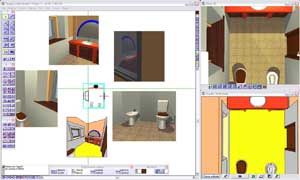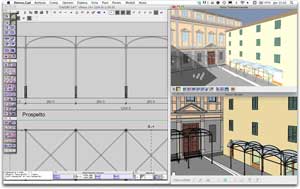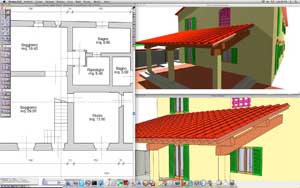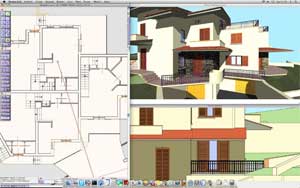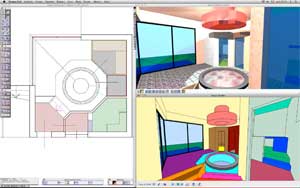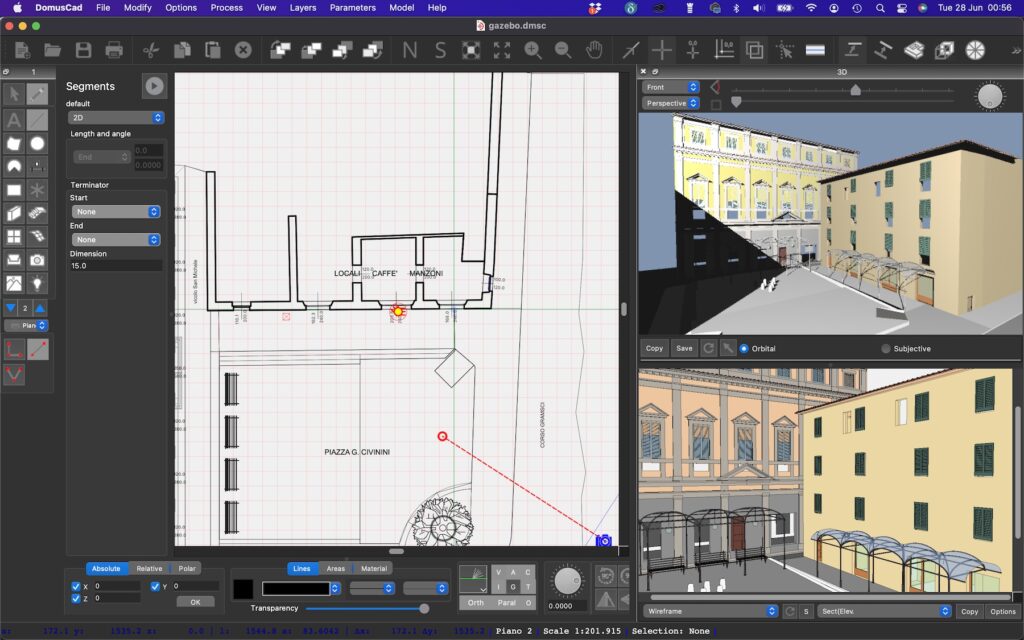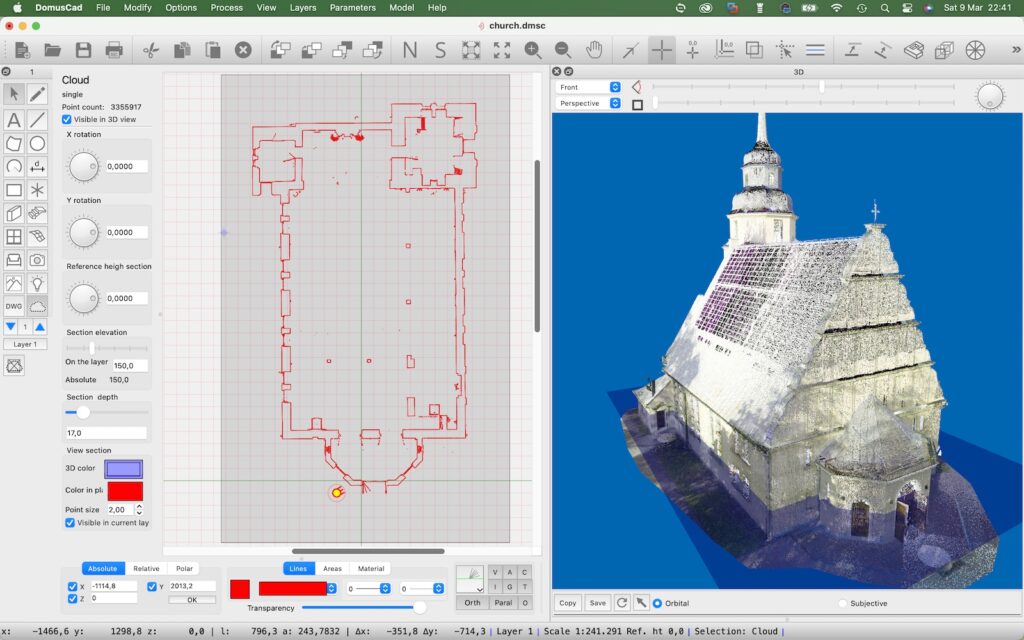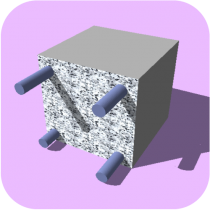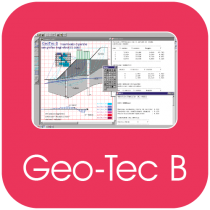
Domus.Cad is a BIM program for architectural 3D design which allows you to face 3D design with the same simplicity as a traditional 2D design, and with the same simplicity allows you not only to design but to plan an entire project directly on your computer.
It is a program with exclusive characteristics that has nothing to fear from any other 3D architectural design program on the market. Domus.Cad is the right CAD for architects and civil engineers.
See wat’s new in Domus.Cad 24 ->
You can immediately begin to create three-dimensional elements without needing to start from a two-dimensional plan. Elements such as walls, floors, roofs, and stairs are created from the onset in their full three-dimensional form. Watch the 3D model change in real time as you design in plan.
Domus.Cad’s strong 3D capabilities are matched by its equally impressive array of 2D CAD tools. This makes it just as easy to produce a full set of presentation and construction documents as it is to create the architectural model itself.
NEW VERSION 24: SEE THE NEW FEATURES >
Invalid Displayed Gallery
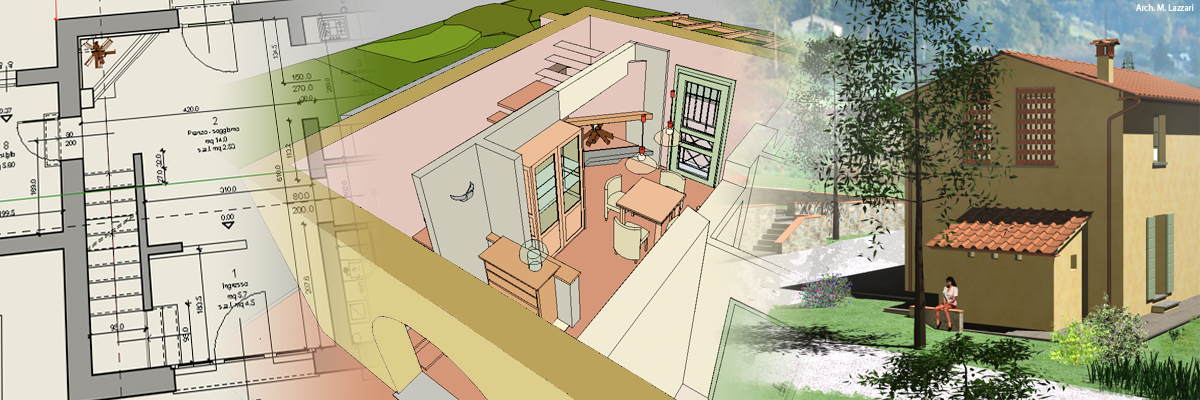 3D design
3D design
With Domus.Cad you can immediately begin to create three-dimensional elements without needing to start from a two-dimensional plan. Elements such as walls, floors, roofs, and stairs are created from the onset in their full three-dimensional form.
Easy to learn
Domus.Cad is intuitive and easy to learn. Uncomplicated procedures of element insertion, movement, and modification allow you to progress easily through all phases of the design process.
Interactive 3D and walkthroughs
Domus.Cad offers true interactive design capabilities. You can keep the 3D window open while you design in plan and watch the model change in real time as you draw. Domus.Cad also allows you to simulate different lighting conditions and do walkthroughs in real time, a definite plus for helping the client understand 3D architectural space. You can directly edit the 3D model elements in the 3D Window.
Vectorial render (Vectorial 3D views)
One of the most important feacture of Domus.Cad Pro and Std is the new vectorial rendering engine, that allows the user to obtain editable elevations, sections, perspectives, axonometries and in a way as the interactive 3D view, generating high quality and very detailed drawings, colored with the same colors as the interactive 3D view .
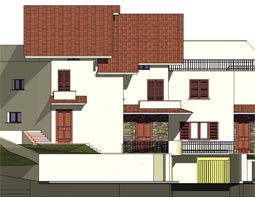

Export/Import
The model created with Domus.Cad can be exported in 3DS format and other formats including Art*lantis, DXF 3D and DWG. A land model created with DomusTerra, Nonio C, or other modeling programs can be imported by Domus.Cad, where it may be viewed and elaborated along with the architectural model. The reverse operation may also be performed: an architectural model may be exported to DomusTerra or Nonio C (in 3DS and QD3D MetaFile format) where it can be placed directly on the modeled landscape.
Importing of the most part of the graphic formats: TIFF, JPG, PICT, GIF, TGA, BMP, PNG and many others.
The “Fusion” process
An exclusive “fusion” process immediately joins the various wall elements, as they are placed, moved or changed, allowing a quick and easy creation of the initial drawing.
2D and 3D tools and parameters
Drawings can be rendered using fills and materials. Fills can be applied to both 2D and 3D elements. Fill tiles can also be used, allowing you to create your own fills. Each element may also be assigned a material containing color and reflective properties. Expandable libraries offer the ability to add additional interest.
3D modeling
Modeling features allow you to extrude and rotate 3D forms from any drawn polygon, along a line, a 3D path or around any axes, making it easy to model furniture, building cornices, structural elements and any unusual architectural form.
2D elements like segments and polygons can be quickly and easy transformed in complex 3D object (ex. a 2D complex liberty drawing of a gate can be transformed in a 3D gate object).
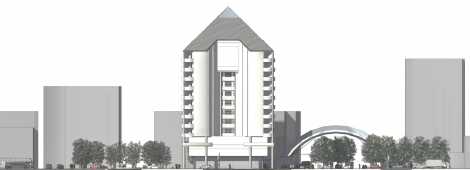
Printing
Domus.Cad has an internal option for multiple-sheet paging with a preview window. Drawings and images are paged directly from the various working layers. If the drawings are changed after they are paged, it is not necessary to re-paginate them, the sheet is updated automatically.
Automatic sections/elevations
A project can also be viewed at any stage of development in a series of automatically-generated 2D and 3D views (sections, elevations, axons, and perspectives). Once generated, these views can be touched up or modified directly in Domus.Cad.
A complete 2D tools set
Domus.Cad’s strong 3D capabilities are matched by its equally impressive array of 2D CAD tools. This makes it just as easy to produce a full set of presentation and construction documents as it is to create the architectural model itself.
Artlantis render integration
A Domus.Cad model can be exported to rendering programs such as Artlantis to create photorealistic images and movies. Domus.Cad and Artlantis make up a complete architectural software package
Extended snap functions
Snap to barycenters, axes, borders, perpendicular, tangents, corners of images and objects, combined snaps, alignements and others. Interactive visualization of different kinds of possible Snap (cursor changes shape depending on whether the Snap is ‘normal”, to an Axis, to the Barycentre, etc.)
Stratigraphies
Here is a stratigraphy with composition and graphic representation.
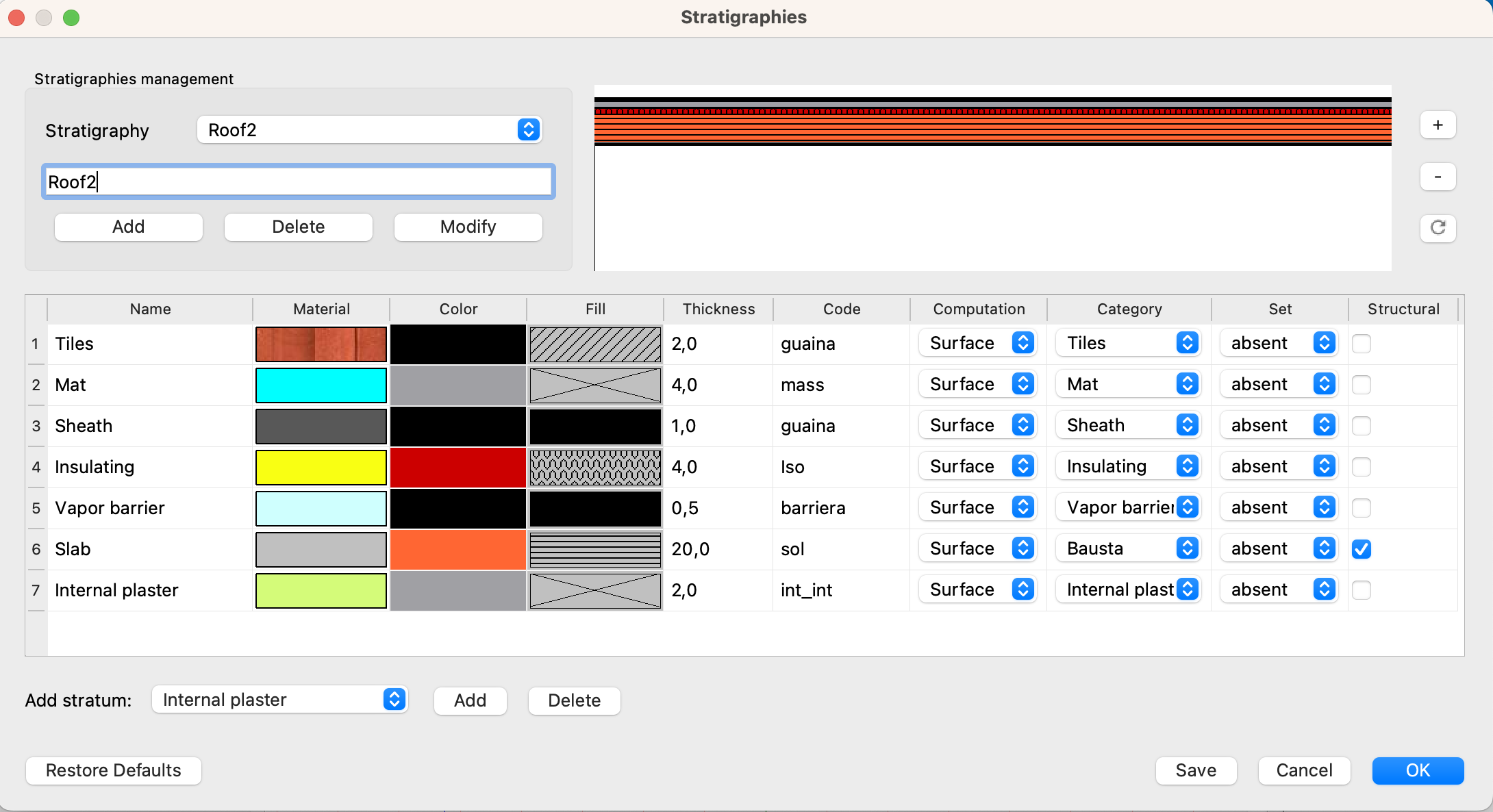
Architectural modeling
Specialized modules allows you to create rapidly and parametrically complex architectural elements, like spiral and helical stairs, railings, gates, roof structures, grids and others .
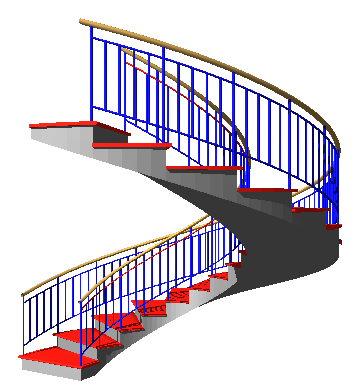

PointClouds
Domus.Cad Pro manages the point clouds within the BIM project. BIM elements and cone point clouds integrated together, allowing a continuous comparison between relief and design.
Domus.Cad automatically generates flat and vertical perone sections. The interactive 3D view shows the overlap between the elements.
High functions allow to extract subgroups of points and organize them, or to change the density of the points.
Vectorial PDF conversion
The Convert PDF command extracts all the information from a PDF file and converts it into Domus.Cad elements (lines, circles, arcs, texts, images, colors, thicknesses), fills and more), thus generating even complex, editable drawings.
In this way technical drawings, advertising graphics, standards, letters, spreadsheet content and more are convertible.
- 3D architectural modelling
- Walls, floors, slabs, doors, windows, stairs parametric architectural elements.
- 3D designing quicker and easier than simple 2D designing
- Automatic fusion of walls and other 3D elements
- 3D extrusions from any polygon
- 3D rotational surfaces and volumes from any polygon
- 3D standard volumes and surfaces
- Doors/Windows shapes, parameters and editing
- Walls Join, Cut and Fillet
- Multiple selection extrusion
- 3D Windows direct selection and editing
- Vectorial rendering automatically generates elevations, sections and perspective editable drawings.
- L, U and Z spiral stairs generation
- Land modelling.
- Ability to convert 3D elements to segments
- Ability to convert 2D elements to 3D
- Floor and Roof structures
- Complete spiral stairs
- Plugin for railings
- 3D view editable list
- 3D rendering and Walkthroughs
- 3D interactive rendering and MetaFile
- Watch the 3D model change in real time as you design in plan
- Walkthroughs in real time
- Supports plug-in renderers
- Sun light depending on date and hour
- Textures
- Texture antiliasing
- Interactive Phong renderer, Raytracing Renderer, OpegGl-Quesa Support, Cartoon and Hiddel Lines
- High resolution 3DSuperimposed 3D views,;generation of superimposed 3D views, raster and vectorial, with the lines of the vectorial rendering perfectly supeimposed to the raster shaded and colored OpenGl rendering
- Import-Export
- Imports in Copy and Paste, PICT, DXF 2D, DXF 3D, DWG, DWF, SVG, TIF, GIF, JPG, BMP, TGA, PDF, Art*lantis and many others
- Exports in Copy and Paste, PICT, QuickDraw 3D MetaFile, 3DS, DXF 2D, DXF 3D, DWG, DWF, SVG, IFC, Art*lantis, BMP, WMF and AREF formats (AREF format allows exchange of data with other Interstudio programs)
- Imports maps from Google Maps
- Drawing
- Multiple Undo/Redo
- Automatically generated sections, elevations, axons, and perspectives that can be modified directly inside the program.
- Enhanced user interface
- Online guide accessible inside program from Help menu
- Fill tiles for creating personalized fills
- Automatically generated interactive dimensions
- Internal multiple-sheet paging with preview function
- Generate Demolition/Construction Overlay
- Alignment of segments to other elements
- Expandable libraries
- Apply Object. It allows you to apply a library object to selected elements, like a Window frame to windows elements.
- Rotated objects can be deformed on their original axis
- PictRot plug-in allows you to change colors, resolution, transparence and to rotate pictures.
- Allows any unit of measurement
- Linear fills
- Trasparencies, the elements with a solid fill can be opaque, partially transparent or totally transparent
- Project management
- Automatic quantities calculations
- Ability to organize elements by names, categories and sets
- Automatic backup
- Convert geometry into text
- … many others
- Development system. The program was developed with the QT multiplatform system, which allows us to develop simultaneously for Windows, MacOs, Linus, Android and IOS. It allows us to use the most advanced software technologies and implement them quickly to make the most of all available resources. All documents created are cross-platform and can be freely exchanged between various operating systems.User interface. When the functionalities of the programs increase there is always the risk of filling the screen with buttons, menus, sliders, check boxes, input fields and more, making learning difficult and using complicated. The Domus.Cad 4 user interface is modern, innovative and dynamic. It changes automatically following what the user is doing, without the need to clutter up the monitor and allowing you to well use the worksheet. Being an architectural BIM program, it contains both all architectural elements such as walls, stairs, floors, roofs, etc. that the graphic elements such as circles, lines, dimensions, etc., the interface adapts to the insertion and modification showing what is needed. If. for example, I insert a wall, activates the wall panel and the functions applicable to it.Raster rendering engine. The rendering engine used by the program is based on Ogre, with an operating speed comparable to a video game. It is possible to move in real time in the 3D model in a subjective view, as was the case in previous versions, and in an orbital way, as if you were handling an object. The quality is high with a complete management of materials, lights and shadows. As usual, the sectioning plane allows you to create dynamic three-dimensional sections and cross-sections. Rendering can use OpenGl, Direct X and Metal.Vector rendering engine. The vector rendering engine allows you to generate 3D views composed of colored lines and polygons. It can be used both for drawn perspectives, and for elevations, sections and technical views in general. Raster and vector images can be overlaid for expressive and technically flawless graphic results.Multi-document. Domus.Cad 4 manages an indefinite number of contemporary documents. Elements can be copied and pasted from one document to another.Import-export. Domus.Cad 4 communicates with everyone through the support of many formats. In addition to the Open BIM IFC format, the program supports both import and export DWG, DXF, DWF, PDF, about 20 image formats, including of course PNG, JPEG, TIFF, GIF, BMP and others. It can import 3D models in about 70 three-dimensional formats, including 3DS, OBJ, Blend and others. The bill of quantities can be exported as TXT, CSV, ODF and PDF. Copy and paste and drag and drop are also supported.Advanced pagination. The layout procedure of the tables has been improved with the possibility of simultaneously managing an indefinite number of tables of different sizes and scales. Alignment recognition procedures allow you to quickly align the various table components. In addition to being printed, the table can also be exported to DWG, DXF, DWF, PDF or to one of the many supported image formats. High quality graphics. The graphics of the drawing have a high quality representation, its fidelity with respect to the print is high, the video scale is perfectly equal to the print scale and best supports modern high quality monitors such as Retina Displays and OLEDs. Transparency management, 6 types of screens and fills, management of thicknesses, line types, multi-line texts with multi-style support, anti-aliasing and more.Fusion of the walls. Wall merging is one of the main features of Domus.Cad and allows you to insert walls or other similar elements quickly, with automatic connections, complex nodes, attachment and detachment of the elements. In Domus.Cad 4 this function has been improved and enhanced. The attack distance is independent for the two ends, as well as the intersection distance. Everything is controlled by the wall panel, available during the design and selection phase when you click on the walls icon. The wall is a generic element that can be used for pillars, beams, generic construction elements made of wood or other materials.Contemporary 2D and 3D. In Domus.Cad there is no difference between designing in 2D and 3D, because different elements are not used. The easiest and fastest way to draw a floor plan is to use walls and windows, whether we are designing a building to also have three-dimensional views, or whether we are designing a floor plan for the cadastre. This is even more true in Domus.Cad 4, where a polygon becomes a slab or a roof simply by adding the information about the height, thickness and slope. The same goes for rectangles and circles, which can also be parallelepipeds, pyramids, cylinders and cones.Colors and materials. Colors and materials can be defined quickly and easily. Colors can be assigned transparency, in addition to RGB values. Materials are defined with their colors of reflected, refracted light and associated textures with their mapping. Coefficients of reflection and absorption of ambient light allow to obtain various types of effects.Fills. Area fills have been expanded with support for bitMap and color fills, scalable and non-scalable hatches, and tile fills, where any design, even complex, can be a tile that repeated creates a fill and ultimately radial fills.
Management of layers. Layers management has been greatly improved. There is no minimum or maximum limit and the plans are managed through a specific table to define their two-dimensional and three-dimensional characteristics. The table also shows the layers with elements, paginated or empty,
The panels. The panels can be closed or opened as needed. On small screens they can stay closed and be opened when needed. There are the element panels, which contain all the parameters of the two-dimensional or three-dimensional elements and the inspection panel, which contains parameters common to all the elements. The panels are interactive and the changes are immediately visible on the drawing and on the 3D model. Operational simplicity and speed are significantly improved compared to using the dialog boxes of previous versions,
Contextual information. Contextual information is shown next to elements when they are selected and as they are drawn. This information, such as distances, perimeter, area, are integrated, again without having to do any particular operation, in the status bar at the bottom and in the element and inspection panels.
Other characteristics. in general, all the functions present in version 3.1 are also present in version 4, with a renewed interface and new features. Among others: architectural modules, modeling modules, access to satellite maps, point cloud management, metric calculation, automatic generation superimposed with demolitions and new constructions, DOCFA management, drilling of polygons, floors and images, interactive dimensions, rotation, mirror, deformation, roto-translation, copy and paste between different documents, management of the various attacks to points, grids, lines, tangents, intersections, with parallel and perpendicular constrains. There are many others and it is too long to describe them in this article. We invite you to click on the links below.
More information >
Domus.Cad Std includes all the Domus.Cad Pro features except the following items:
- Export AREF
- Export 3DS
- Export PICT
- Export BMP
- Export DWF
- Export DOCFA
- Automatic generation of demolition and construction overlay
- Quantity calculation and export
- Generation of diametric oblique axonometry and vectorial isometrics
- Automatic generation of steel L, U and spiral stairs.
- Floor&Roof is optional
- SpiralStair is optional
- SuperRailing is optional
- StairRailing is optional

